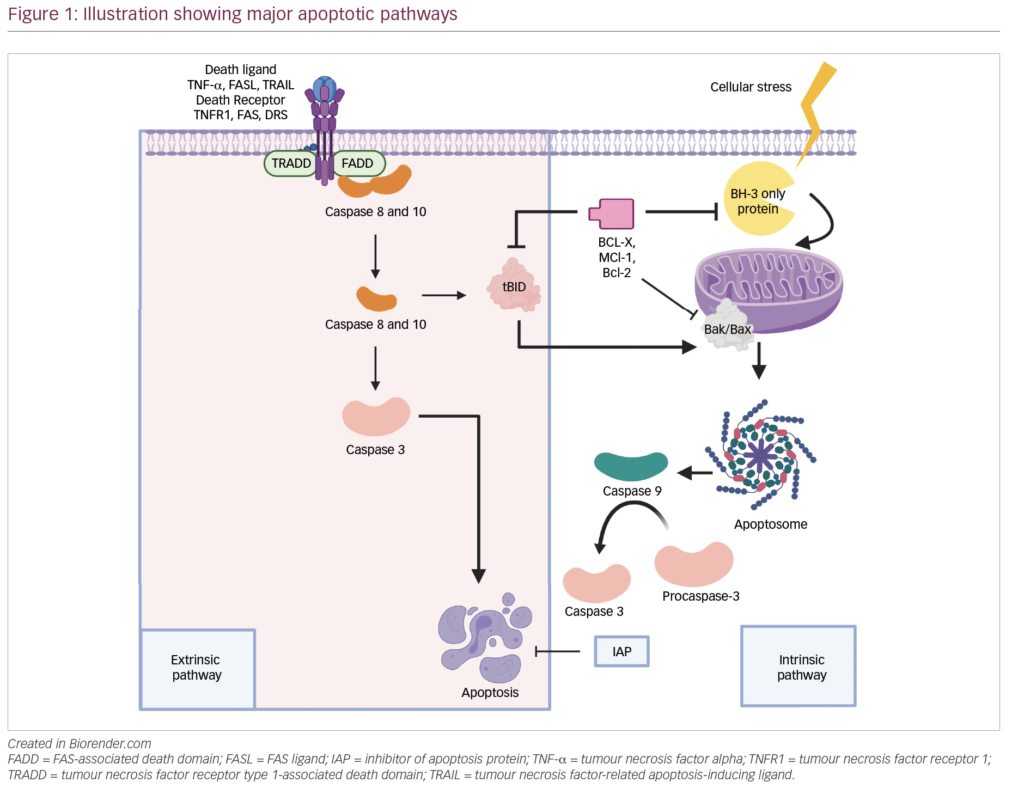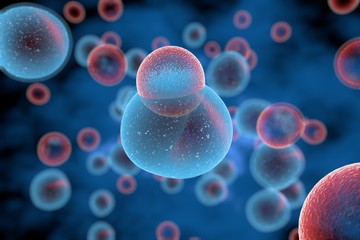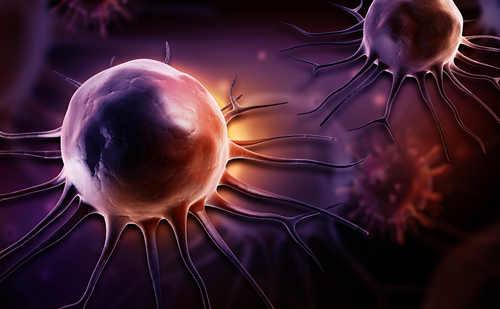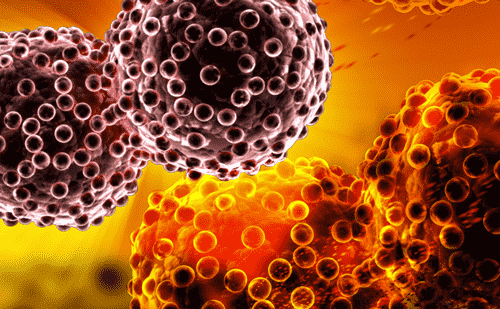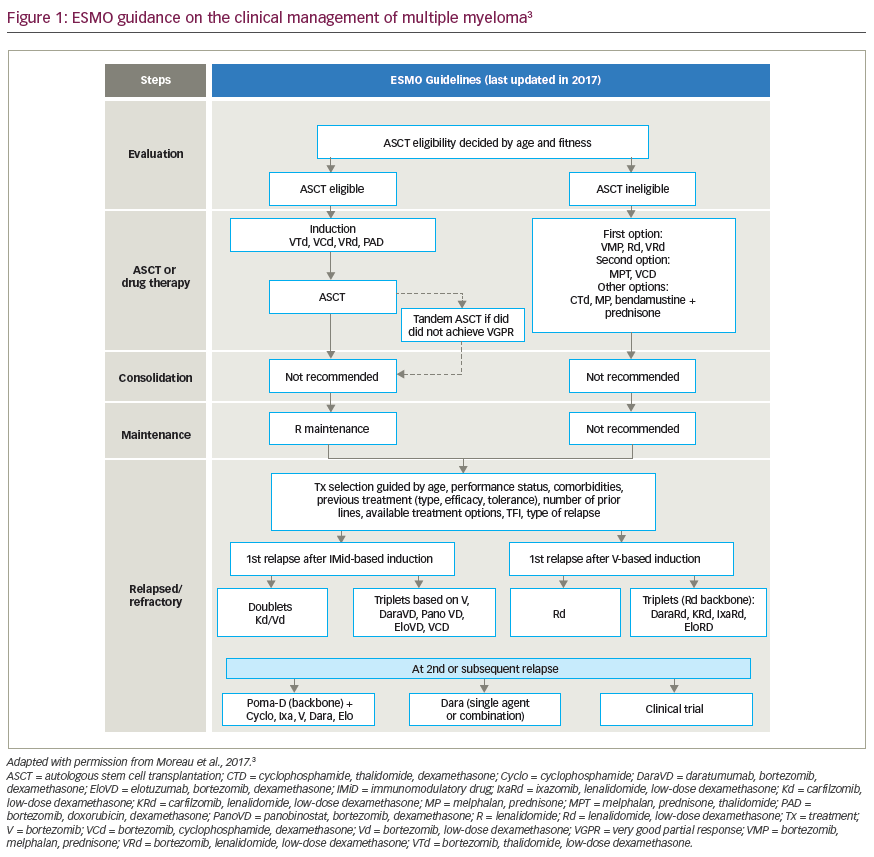Multiple myeloma (MM) is a chemotherapy-resistant malignancy. For decades, the only active drugs have been alkylating agents and high-dose corticosteroids. The introduction of novel agents (thalidomide, bortezomib and lenalidomide) is changing the management of MM patients for front-line therapy and during relapse. These agents have different modes of action and can act not only on the myeloma cells but also on the microenvironment necessary for tumour cell survival and proliferation. In vitro experiments have shown possible synergy with dexamethasone or chemotherapeutic agents. They are active even in heavily pre-treated patients and offer new possibilities for relapsed/refractory MM.
Thalidomide as a Single Agent
Thalidomide is administered orally. Due to its teratogenicity, it is prescribed according to risk-management programmes to avoid the exposure of women with child-bearing potential. Thalidomide was introduced in the treatment of relapsed MM by the Arkansas group.1 Following the results of this pioneering work, a large number of phase II studies were reported and summarised in a comprehensive review (42 studies, 1,674 patients).2
From this experience, the following conclusions can be made:2–5
• the response rate is approximately 45%, including 30% partial remissions (PR);
• complete remission (CR) is rare but possible in heavily pre-treated patients;
• the onset of response is rapid (less than two months) and maximal response is achieved within six months;
• one-year event-free survival (EFS) is about 35% and median overall survival (OS) is 14 months;
• prognostic factors for thalidomide treatment are the same as for conventional chemotherapy and include tumour burden markers and cytogenetic abnormalities;
• thalidomide can be prescribed in patients with renal dysfunction;
• myelosuppression is very rare; and
• the incidence and severity of side effects is related to the daily dosage:
with the initial dosage (400mg/day), the most frequent toxicities are constipation, somnolence, fatigue and peripheral neuropathy. Peripheral neuropathy causes numbness, paraesthesia and even pain in the legs and arms. The overall incidence of peripheral neuropathy is 30% with 10% ≥grade III, but is related to the accumulated dose and is as high as 75% in patients treated for more than one year.6 As there is no effective prophylaxis and treatment, the drug should be discontinued if the patient experiences peripheral neuropathy signs or symptoms.3–5 Currently, the daily doses of thalidomide have been reduced to 100–200mg/day.
Thalidomide in Combination
The combination of thalidomide plus dexamethasone has been developed with the objectives of increasing the efficacy and reducing the daily dose and toxicity of thalidomide.6–8 Although no randomised study comparing thalidomide and thalidomide–dexamethasone (TD) has been performed, TD is considered more effective than thalidomide alone (approximately 45% response rate) and superior to conventional chemotherapy as a first relapse treatment.9 As thalidomide is not myelotoxic, combinations with chemotherapy have also been evaluated in phase II trials with response rates ranging from 36 to 73%.3–5
While combinations of thalidomide with dexamethasone or chemotherapy alone appear to be more active, they are also more toxic, with a higher incidence of infectious complications. Most importantly, they induce an unexpected complication: deep vein thrombosis. While with thalidomide alone the incidence of deep vein thrombosis is <5%, as with any treatment of MM, with TD the incidence is 10–15% and with chemotherapy (especially anthracyclines) it increases to 30%.10,11 This complication usually occurs during the first three months of treatment, and is more frequent in newly diagnosed patients and those with a high tumour burden. The optimal prophylaxis is not yet known, and oral anticoagulants, low-molecular-weight heparin and low-dose aspirin are currently being evaluated.3
Bortezomib
Bortezomib is the first-in-class proteasome inhibitor. In MM, it is active not only on the myeloma cell but also on the microenvironment. It is administered intravenously at a dose of 1.3mg/min on days one, four, eight and 11 in 21-day cycles. Two phase II studies have shown that, in heavily pre-treated patients, the response rate with bortezomib as a single agent is 25–30% and can be increased by the addition of dexamethasone.12,13 Following these studies, the drug has been approved in the US and Europe. The large randomised phase III trial Assessment of Proteasome Inhibition for Extending Remissions (APEX) has demonstrated that bortezomib is superior to dexamethasone in relapsed MM in terms of response rate (including CR), time to progression and OS.14 The onset of response is rapid – usually within two cycles – and the maximal response can be achieved after up to eight cycles. A subgroup analysis of patients who had received one line of treatment confirmed the superiority of bortezomib compared with dexamethasone as treatment of first relapse.15 Based on these phase II–III studies, the toxicity profile is well defined. The most frequent side effects are gastrointestinal symptoms (diarrhoea or constipation) and fatigue, but they are usually mild. The drug is not myelotoxic, but can reduce platelet count by up to 60%.16
This thrombocytopoenia is rapidly reversible, usually before the following cycle. Peripheral neuropathy is observed in 30–40% of cases (≥grade III in 10–15%) and is more frequent in patients with a previous history of neuropathy. Signs and symptoms are reversible in two-thirds of cases after dose reduction or drug discontinuation.17 Bortezomib appears to be equally effective in older patients and in patients with poor-risk disease.18,19 It can be safely prescribed to patients with renal failure and even patients on dialysis.20,21 Based on pre-clinical studies and on the drug toxicity profile, a number of phase II studies have evaluated bortezomib in combination with either dexamethasone or chemotherapy. A large randomised study has shown the superiority of bortezomib plus pegylated liposomal doxorubicin compared with bortezomib alone.22
Lenalidomide
Lenalidomide is a thalidomide analogue that appears to be more potent in vitro. It is not teratogenic in animal models and, importantly, after a phase I study it became apparent that the toxicity profile of lenalidomide is completely different from that of thalidomide.23 The constipation, somnolence, fatigue and peripheral neuropathy that are frequent adverse events with thalidomide were not observed. The most frequent side effect of lenalidomide was myelosuppression, often after 28 days of treatment. In phase II trials, the drug was given orally for 21 consecutive days. In heavily pre-treated patients, the response rate was 25% and was increased by the addition of dexamethasone.24 Two large randomised trials were then conducted in the US and in Europe.25,26
They both compared lenalidomide 25mg/day for 21 consecutive days plus high-dose dexamethasone with dexamethasone alone. Both trials showed the superiority of the combination in terms of response rate (including CR), time to progression and OS. Based on these studies, the drug was approved by the US Food and Drug Administration (FDA) and the European Medicines Agency (EMEA). However, as with thalidomide, the combination of lenalidomide with dexamethasone induces deep vein thrombosis and justifies prophylactic treatment, at least with low-dose aspirin. The treatment should be used with caution in patients with renal failure due to a higher myelotoxicity (especially thrombocytopoenia) in patients with less than 50ml/min creatinine clearance. Lenalidomide is currently tested up-front in combination with dexamethasone or with chemotherapy.
Combination of Novel Agents
Since the toxicity profiles of these three agents are different, it seems logical to combine them with the objective of increasing efficacy. The combination of thalidomide or lenalidomide with bortezomib is the most attractive, due to the possible synergy of agents that have different modes of action. Thalidomide and bortezomib have been combined with either dexamethasone (VTD) or with melphalan prednisone (VMPT) with very encouraging results and an acceptable toxicity level.27,28 The combination of bortezomib and lenalidomide is currently being tested.29
Role of Stem Cell Transplantation at First Relapse
Autologous stem cell transplantation (ASCT) is currently considered the standard of care for front-line therapy in patients up to 65 years of age. However, ASCT is also a useful salvage treatment in chemotherapysensitive or untreated relapses.30 When comparing early ASCT and ASCT when conventional chemotherapy fails (late ASCT), there is no difference in OS, although time to progression is longer with early ASCT.31 If late ASCT is considered, it should be useful to collect stem cells early,32 since the haematopoietic quality of grafts is often reduced by previous chemotherapy, especially alkylating agents.33 When ASCT has been performed up-front, a second ASCT is justified if the duration of first remission has been greater than two years.
Allogeneic SCT is probably the only treatment that can induce long-term clinical and molecular remissions. However, standard myelo-ablative regimens prior to allogeneic SCT have been almost entirely abandoned, especially for relapsed MM, due to a high transplant-related mortality, which has risen to 50%.34 With reduced-intensity conditioning allogeneic SCT, transplant-related mortality is reduced, even in relapsed MM (20–25% at one year).35 However, the risk of relapse is higher than with standard allogeneic SCT, especially in chemotherapy-resistant disease or when the tumour burden is high.36 Current strategy aims at reducing the tumour burden first, e.g. with high-dose melphalan followed by ASCT, and then exploiting the graft-versus-myeloma effect of donor lymphoid cells. This strategy is mostly proposed for first-line treatment in patients with a human leukocyte antigen (HLA)-identical donor,37 but can also be offered at first relapse if CR or very good partial remission (VGPR) has been achieved with salvage therapy.
Therapeutic Strategy
With the introduction of novel agents, it is possible to achieve CR in relapsed MM. In the large randomised studies testing bortezomib and lenalidomide, the progression-free survival (PFS) and OS increase was associated with a CR rate increase compared with the control arms.12,25,26 In the APEX trial, PFS was 12 months for patients in CR versus eight months for patients in PR.38 Therefore, as for front-line therapy, the objective of first relapse treatment should be to achieve the best possible response. With this objective in mind, it is logical to use novel agents for first relapse treatment as they are effective even in heavily pre-treated patients. Although no randomised study has compared thalidomide, bortezomib and lenalidomide given as single agents with combinations, they are usually administered in combination at least with dexamethasone. The choice of treatment depends on a variety of parameters including age, previous treatment, prior toxicities and the availability of novel agents, which varies across the world.
There are special situations in which the choice is easier. For instance, if thalidomide has been used for front-line therapy, it is better to use bortezomib or lenalidomide in first relapse treatment in order to avoid the risk of peripheral neuropathy related to cumulative doses of thalidomide. In patients with renal failure, bortezomib is the treatment of choice, while in patients with peripheral neuropathy, lenalidomide is preferred. Fulminant relapses or poor-risk cytogenetics should be treated with combinations including bortezomib or lenalidomide.
The optimal duration of salvage treatment is unknown. In order to reduce the risk of toxicity and resistant clones selection, treatment could be stopped three months after the best result is achieved. In younger patients (<65 years), ASCT can be considered in sensitive relapses if stem cells are available. Reduced-intensity conditioning allogeneic SCT is possible in patients who achieve CR with salvage treatment. ■
My Learning
Login
Sign Up FREE
Register Register
Login
Trending Topic

12 mins
Trending Topic
Developed by Touch
Mark CompleteCompleted
BookmarkBookmarked
Allan A Lima Pereira, Gabriel Lenz, Tiago Biachi de Castria
NEW
Despite being considered a rare type of malignancy, constituting only 3% of all gastrointestinal cancers, the incidence of biliary tract cancers (BTCs) has been increasing worldwide in recent years, with about 20,000 new cases annually only in the USA.1–3 These cancers arise from the biliary epithelium of the small ducts in the periphery of the liver […]
touchREVIEWS in Oncology & Haematology. 2025;21(1):Online ahead of journal publication





